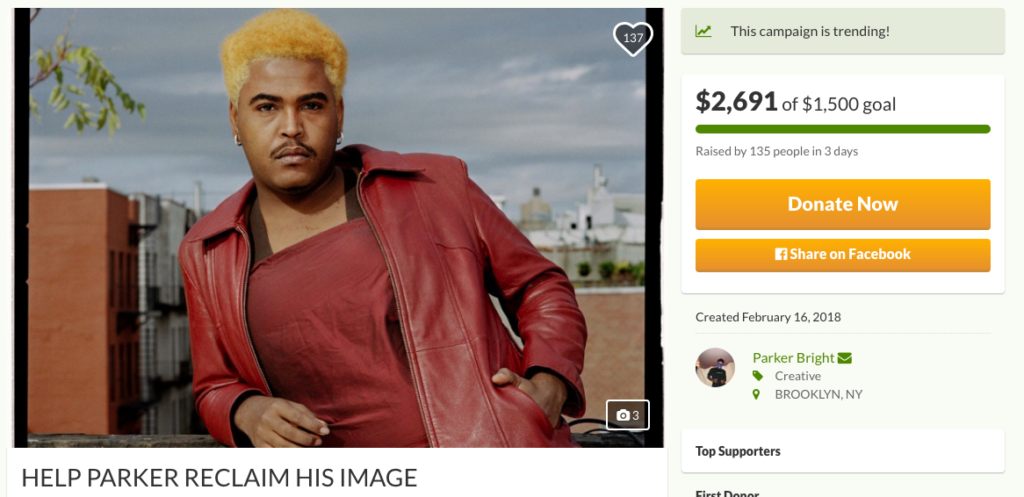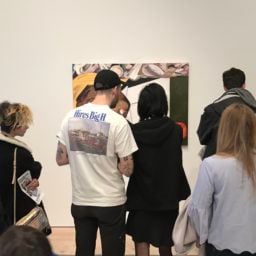Parker Bright, the artist and activist who staged a memorable protest in front of a Dana Schutz painting at the Whitney Biennial last year, is travelling to Paris on March 1 to stage a new but related demonstration, this time at the Palais de Tokyo.
Bright objects to the French-Algerian artist Neïl Beloufa’s use of an image of his protest against Schutz in Beloufa’s new show, “L’ennemi de mon ennemi (The enemy of my enemy)” (February 16–May 13).
The exhibition’s curator Guillaume Désanges tells artnet News he and Beloufa agree with Bright’s critique. Although the curator sent Bright an email to apologize and removed the image soon after Bright registered his opposition, the American artist tells us that he is unsatisfied with the response and still plans to travel to Paris to register his objections in person.
“Acknowledging that the work would fail and is problematic after showing it and taking it down is not enough, it’s very insensitive and negates accountability,” Bright says.
As part of his sprawling installation, Beloufa reproduced on a mirror a photograph of Bright standing in front of Open Casket (2016), Schutz’s controversial painting of Emmett Till. Bright wore a t-shirt saying “Black Death Spectacle.”
Objecting to the unauthorized appropriation of his demonstration, Bright set up a GoFundMe page to raise money to travel to Paris to protest in the galleries and engage in conversation with the artist and the exhibition’s curator. The fundraiser quickly hit its target and now stands at almost double the initial $1,500 goal. (Bright’s project was first reported by ARTnews.)
When contacted by artnet News, Beloufa was unable to comment. In a statement in response to the planned protest, the Palais de Toyko explains that Beloufa’s show offers visitors the chance to analyze “the different modes of representation of power, the mechanics of domination, and their counter strategies.”
Bright’s image is one of more than 200 included in Beloufa’s installation, which reproduces news items and historical documents to illustrate how history is written and rewritten to favor those in power. Robots move the source material around the space according to an algorithm, which is meant to raise doubts about the permanence of any singular meaning.
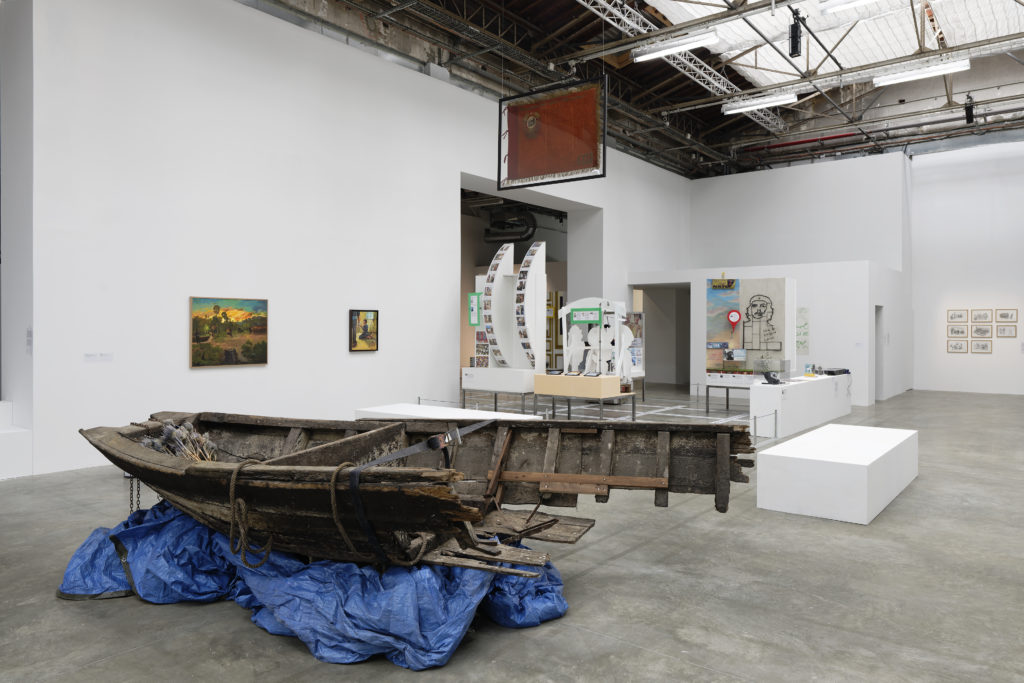
Installation shot, Neïl Beloufa, “L’ennemi de mon ennemi” (“The enemy of my enemy”). Courtesy of Palais de Tokyo.
Guillaume Désanges tells artnet News: “Everything in the exhibition is a kind of appropriation, reproducing facts and images that exist and are reproduced several times over by press and social media, but this time put in an arts context.” The curator adds: “It does not focus on a specific topic, but on the contrary displays a multiplicity of perspectives, in a constant mobility of readings and meanings.”
The show was always intended to be a work in progress, the museum noted. Beloufa had, from the beginning, anticipated that he might remove some of the reproductions in the show as claims from their legal owners emerged. “Exhibited or removed from the exhibition, the reproductions of Neïl Beloufa say something extremely strong of our vision of the world, and our relationship to images and art,” the museum’s statement reads.
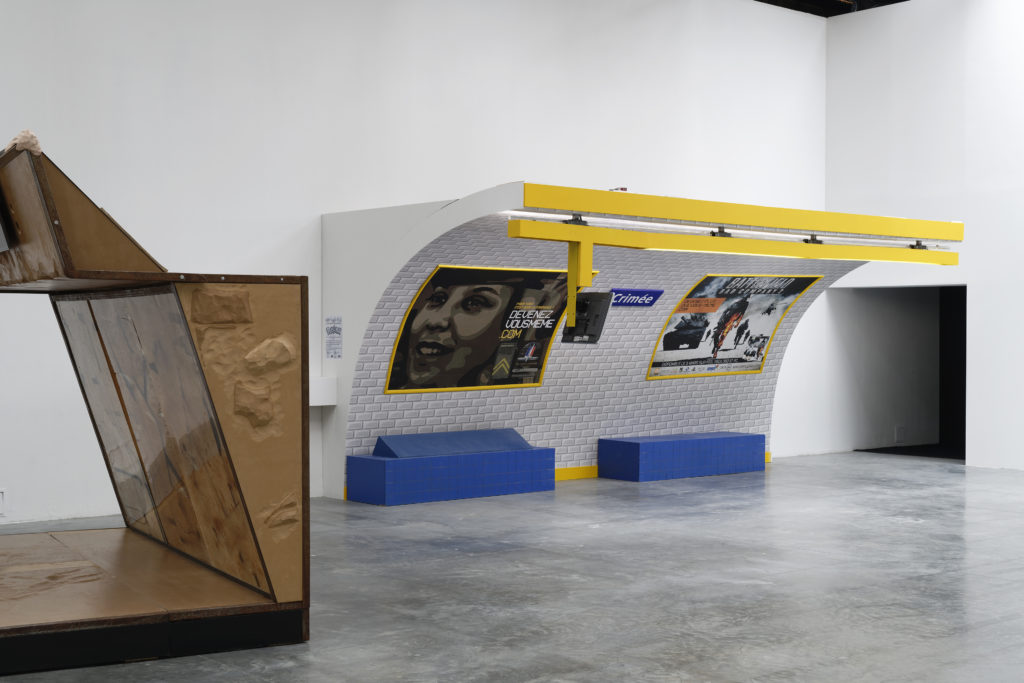
Installation shot, Neïl Beloufa, “L’ennemi de mon ennemi” (“The enemy of my enemy”). Courtesy of Palais de Tokyo.
Bright, however, isn’t convinced by the museum’s interpretation. He sees Beloufa’s appropriation of his image as analogous to Schutz’s appropriation of photographs of Emmett Till’s body. The teenager’s body was placed in an open casket by his mother after his murder by white racists. “There is no difference in the mistakes they’ve both made,” he says. “They are both examples of white or non-Black exploitation of Black suffering because in each instance they felt as artists that they can empathize with and recontextualize experiences that they do not have any connection to…. It is not for them to appropriate or co-opt narratives and to project onto them.”
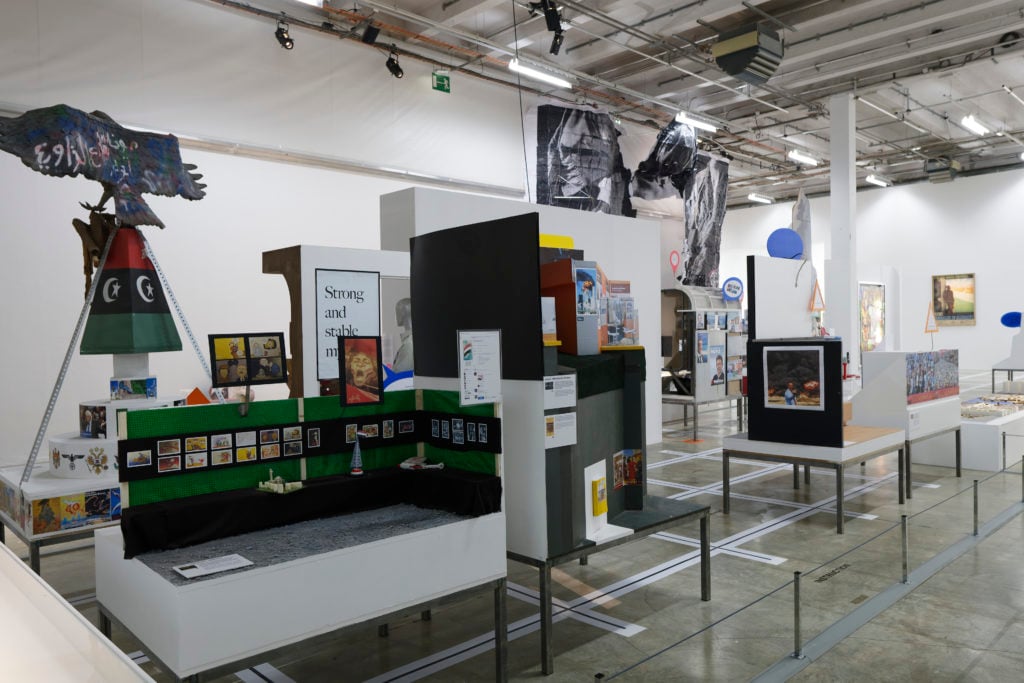
Installation shot, Neïl Beloufa, “L’ennemi de mon ennemi” (“The enemy of my enemy”). Courtesy of Palais de Tokyo.
For the moment, Bright is not saying what he hopes will emerge from the protest, telling us the details will be revealed after he arrives in Paris. “This protest can take form in a number of ways and will change according to how these next few weeks transpire,” he says. Curator Désanges is willing to engage with Bright when he arrives, telling artnet News, “It is a complex project dealing with the complexity of our world.”
